-
 Bitcoin
Bitcoin $116400
-0.36% -
 Ethereum
Ethereum $4033
3.40% -
 XRP
XRP $3.302
-1.26% -
 Tether USDt
Tether USDt $1.000
-0.02% -
 BNB
BNB $796.1
1.67% -
 Solana
Solana $177.8
1.89% -
 USDC
USDC $0.9999
0.00% -
 Dogecoin
Dogecoin $0.2314
4.09% -
 TRON
TRON $0.3381
0.14% -
 Cardano
Cardano $0.7989
1.22% -
 Stellar
Stellar $0.4496
-1.84% -
 Chainlink
Chainlink $20.42
9.42% -
 Hyperliquid
Hyperliquid $41.17
0.88% -
 Sui
Sui $3.914
3.77% -
 Bitcoin Cash
Bitcoin Cash $584.7
1.52% -
 Hedera
Hedera $0.2632
-0.54% -
 Avalanche
Avalanche $24.09
3.40% -
 Ethena USDe
Ethena USDe $1.001
-0.02% -
 Litecoin
Litecoin $123.2
1.33% -
 Toncoin
Toncoin $3.318
-0.04% -
 UNUS SED LEO
UNUS SED LEO $8.984
-0.05% -
 Shiba Inu
Shiba Inu $0.00001323
2.85% -
 Uniswap
Uniswap $10.90
4.41% -
 Polkadot
Polkadot $3.999
3.34% -
 Dai
Dai $1.000
0.01% -
 Cronos
Cronos $0.1630
9.64% -
 Bitget Token
Bitget Token $4.484
0.82% -
 Monero
Monero $272.4
2.44% -
 Pepe
Pepe $0.00001173
6.03% -
 Aave
Aave $290.8
2.88%
Can you chase after a gap-up opening without filling the gap?
Chasing a gap-up opening in crypto can be risky; wait for price confirmation and use stop-loss orders to manage potential losses effectively.
Jun 03, 2025 at 02:42 am
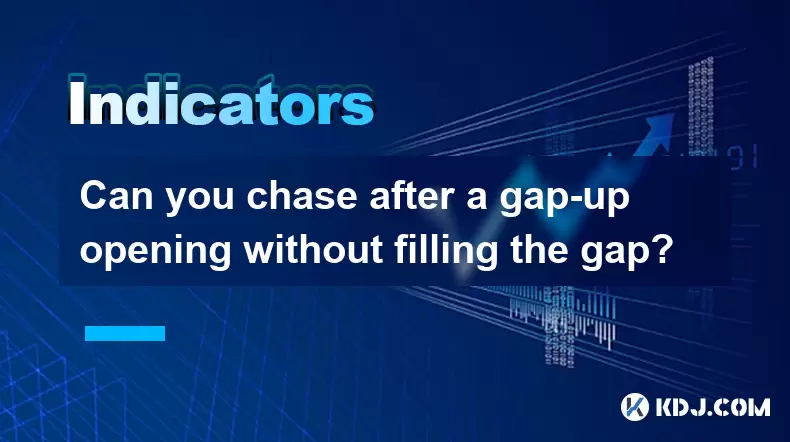
Can you chase after a gap-up opening without filling the gap?
In the world of cryptocurrencies, a gap-up opening is a phenomenon that can create both excitement and uncertainty among traders. A gap-up occurs when the price of a cryptocurrency opens significantly higher than its previous closing price, creating a "gap" in the price chart. Traders often wonder if it's possible to chase after such a gap-up opening without the gap being filled. This article delves into the intricacies of gap-ups in the crypto market, exploring the potential for chasing these movements and the factors that influence whether a gap will be filled.
Understanding Gap-Ups in Cryptocurrency Markets
A gap-up opening in the cryptocurrency market is typically driven by significant news or events that occur outside of trading hours. These can include regulatory announcements, technological developments, or macroeconomic shifts that impact investor sentiment. When a gap-up occurs, the opening price is higher than the previous day's closing price, leaving a visible gap on the price chart. This gap represents a period where no trading took place, and the price jumped from one level to another without any intermediate transactions.
Factors Influencing Gap Filling
Whether a gap-up will be filled depends on several factors. The strength of the underlying news or event that caused the gap is crucial. If the news is considered a one-time event with no lasting impact, the gap might be filled as the market digests the information and returns to equilibrium. Conversely, if the news suggests a long-term positive change, the gap may remain unfilled as the market continues to adjust to the new reality.
Market sentiment and volume also play significant roles in determining whether a gap will be filled. High trading volumes following a gap-up can indicate strong interest and confidence in the new price level, making it less likely for the gap to be filled. On the other hand, if the volume is low, it might suggest that the gap-up was driven by a small number of traders, increasing the likelihood of the gap being filled as more traders enter the market.
Chasing a Gap-Up: Risks and Strategies
Chasing a gap-up opening involves buying into the cryptocurrency at the higher price immediately after the gap occurs. This strategy can be lucrative if the price continues to rise, but it also carries significant risks. One of the primary risks is that the gap may be filled, leading to a price drop that can result in losses for those who chased the gap.
To mitigate these risks, traders often employ various strategies. One approach is to wait for a confirmation of the new price level before entering a trade. This can be done by monitoring the price action after the gap-up to see if it holds steady or continues to rise. If the price remains stable or increases, it may be a sign that the gap will not be filled, making it a safer time to enter a trade.
Another strategy involves setting stop-loss orders to limit potential losses. By placing a stop-loss order just below the gap, traders can protect themselves from significant downturns if the gap is filled. This allows them to participate in the potential upside while managing the downside risk.
Technical Analysis and Gap-Ups
Technical analysis can be a valuable tool for traders looking to chase gap-ups. Chart patterns, such as support and resistance levels, can provide insights into whether a gap is likely to be filled. For instance, if a gap-up occurs near a strong resistance level, it may be more likely to be filled as the price struggles to break through the resistance.
Indicators like the Relative Strength Index (RSI) and Moving Averages can also help traders gauge the momentum and trend of the cryptocurrency. If the RSI shows that the cryptocurrency is overbought following a gap-up, it might suggest that a correction is imminent, increasing the likelihood of the gap being filled. Conversely, if the RSI indicates that the cryptocurrency is still in a healthy range, it may be safer to chase the gap-up.
Psychological Factors in Gap-Up Chasing
The psychology of trading plays a crucial role in deciding whether to chase a gap-up. FOMO (Fear of Missing Out) can drive traders to enter trades hastily, hoping to capitalize on the upward momentum. However, this emotional response can lead to poor decision-making and increased risk.
To combat these psychological pressures, traders should develop a disciplined approach to trading. This includes setting clear entry and exit points, sticking to a trading plan, and avoiding impulsive decisions based on short-term price movements. By maintaining a level-headed approach, traders can make more informed decisions about whether to chase a gap-up.
Real-World Examples of Gap-Ups in Crypto
To illustrate the dynamics of gap-ups and the decision to chase them, let's look at a few real-world examples from the cryptocurrency market. In 2021, Bitcoin experienced a significant gap-up following the announcement of institutional adoption by major companies. The price jumped from around $30,000 to $40,000 in a matter of hours. Traders who chased this gap-up without waiting for confirmation faced substantial risk, as the price eventually retraced to fill the gap before resuming its upward trend.
Another example is the gap-up experienced by Ethereum in 2020 after the Ethereum 2.0 announcement. The price surged from $350 to $450, creating a gap that was not immediately filled. Traders who waited for confirmation and entered trades after the initial surge were able to benefit from the continued upward movement, as the gap remained unfilled for an extended period.
Frequently Asked Questions
What is the best time to chase a gap-up opening in the crypto market?
The best time to chase a gap-up opening is after confirming that the new price level is stable. This can be done by waiting for the price to hold steady or continue rising after the gap-up, and by using technical indicators to assess the momentum and trend.How can I protect myself from losses when chasing a gap-up?
To protect yourself from losses, set stop-loss orders just below the gap to limit potential downturns. Additionally, developing a disciplined trading plan and avoiding impulsive decisions based on FOMO can help manage risk.Are gap-ups more common in certain cryptocurrencies?
Gap-ups can occur in any cryptocurrency, but they are more common in highly liquid and widely traded assets like Bitcoin and Ethereum. These cryptocurrencies are more likely to react quickly to news and events, leading to gap-ups.Can gap-ups be predicted in advance?
While it's difficult to predict gap-ups with certainty, traders can monitor news and events that might impact cryptocurrency prices. By staying informed about regulatory announcements, technological developments, and macroeconomic shifts, traders can anticipate potential gap-ups and be prepared to act accordingly.
Disclaimer:info@kdj.com
The information provided is not trading advice. kdj.com does not assume any responsibility for any investments made based on the information provided in this article. Cryptocurrencies are highly volatile and it is highly recommended that you invest with caution after thorough research!
If you believe that the content used on this website infringes your copyright, please contact us immediately (info@kdj.com) and we will delete it promptly.
- SHIB Price, Meme Coin Mania, and the 250x Potential Hunt
- 2025-08-09 16:30:13
- SOL, ETFs, and AI: Crypto's Triple Threat Sensation!
- 2025-08-09 17:10:12
- Tokenized Stock on Solana: SOL Price Reacts to Exodus's Bold Move
- 2025-08-09 17:10:12
- Cardano, Mutuum Finance, Millionaires 2025: A New Wave of Crypto Fortunes?
- 2025-08-09 17:50:12
- Meme Coins on Blockchains in 2025: Hype or the Future?
- 2025-08-09 16:50:11
- World Liberty Financial, Public Listing, and WLFI Tokens: A New York Minute on the Trump-Backed Crypto Venture
- 2025-08-09 16:50:11
Related knowledge

What does it mean when the Triple Moving Average (TRIX) turns downward but the price doesn't fall?
Aug 09,2025 at 12:42pm
Understanding the Triple Moving Average (TRIX) IndicatorThe Triple Moving Average, commonly known as TRIX, is a momentum oscillator designed to filter...

What does it mean when the Williams' oscillator repeatedly hits bottoms but fails to rebound?
Aug 09,2025 at 09:28am
Understanding the Williams %R OscillatorThe Williams %R oscillator, developed by Larry Williams, is a momentum indicator used in technical analysis to...
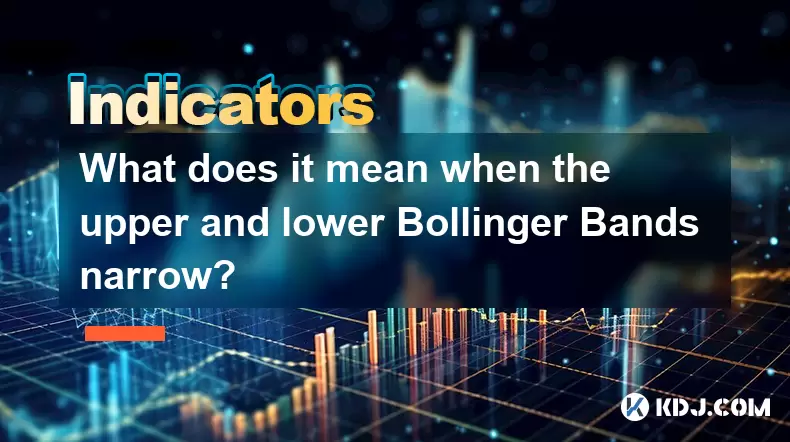
What does it mean when the upper and lower Bollinger Bands narrow?
Aug 09,2025 at 03:00pm
Understanding Bollinger Bands in Cryptocurrency TradingBollinger Bands are a widely used technical analysis tool in the cryptocurrency market, develop...
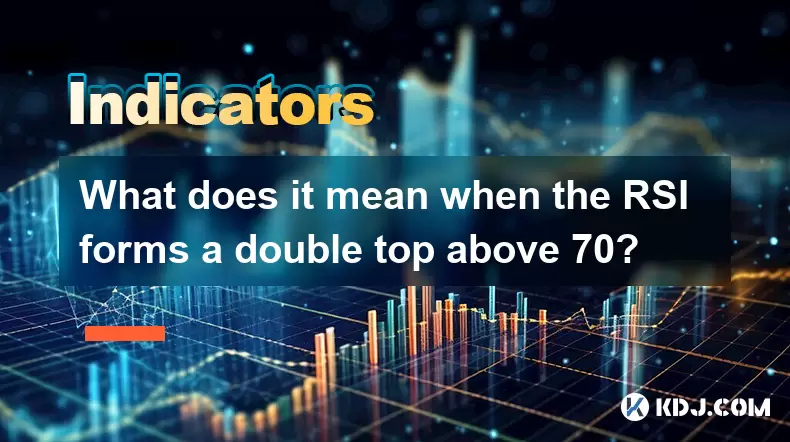
What does it mean when the RSI forms a double top above 70?
Aug 09,2025 at 05:50pm
Understanding the RSI and Overbought ConditionsThe Relative Strength Index (RSI) is a momentum oscillator that measures the speed and change of price ...
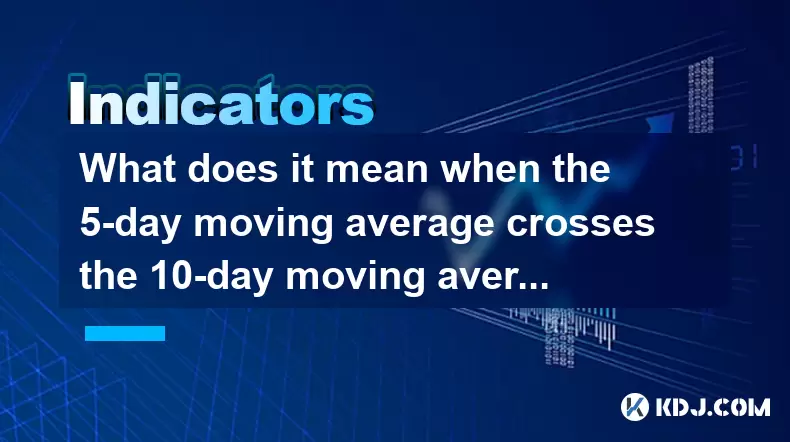
What does it mean when the 5-day moving average crosses the 10-day moving average but the 20-day moving average remains upward?
Aug 09,2025 at 03:35pm
Understanding Moving Averages in Cryptocurrency TradingMoving averages are foundational tools in technical analysis, especially within the cryptocurre...
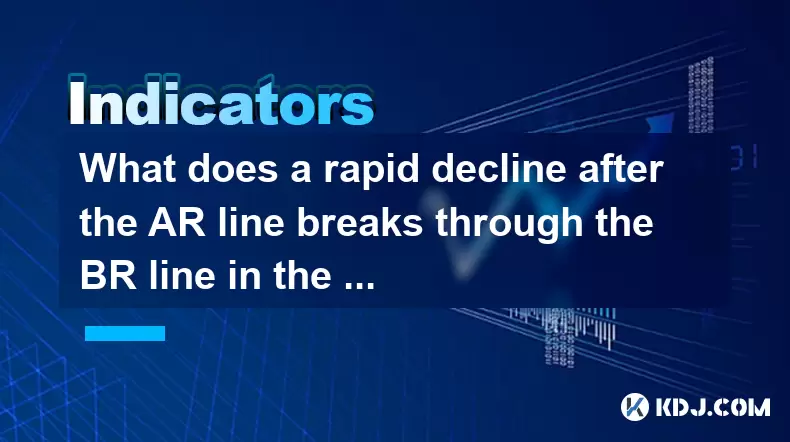
What does a rapid decline after the AR line breaks through the BR line in the ARBR indicator indicate?
Aug 09,2025 at 04:42pm
Understanding the ARBR Indicator ComponentsThe ARBR indicator is a technical analysis tool that combines two oscillators: the AR (Amplitude Ratio) and...

What does it mean when the Triple Moving Average (TRIX) turns downward but the price doesn't fall?
Aug 09,2025 at 12:42pm
Understanding the Triple Moving Average (TRIX) IndicatorThe Triple Moving Average, commonly known as TRIX, is a momentum oscillator designed to filter...

What does it mean when the Williams' oscillator repeatedly hits bottoms but fails to rebound?
Aug 09,2025 at 09:28am
Understanding the Williams %R OscillatorThe Williams %R oscillator, developed by Larry Williams, is a momentum indicator used in technical analysis to...

What does it mean when the upper and lower Bollinger Bands narrow?
Aug 09,2025 at 03:00pm
Understanding Bollinger Bands in Cryptocurrency TradingBollinger Bands are a widely used technical analysis tool in the cryptocurrency market, develop...

What does it mean when the RSI forms a double top above 70?
Aug 09,2025 at 05:50pm
Understanding the RSI and Overbought ConditionsThe Relative Strength Index (RSI) is a momentum oscillator that measures the speed and change of price ...

What does it mean when the 5-day moving average crosses the 10-day moving average but the 20-day moving average remains upward?
Aug 09,2025 at 03:35pm
Understanding Moving Averages in Cryptocurrency TradingMoving averages are foundational tools in technical analysis, especially within the cryptocurre...

What does a rapid decline after the AR line breaks through the BR line in the ARBR indicator indicate?
Aug 09,2025 at 04:42pm
Understanding the ARBR Indicator ComponentsThe ARBR indicator is a technical analysis tool that combines two oscillators: the AR (Amplitude Ratio) and...
See all articles

























































































